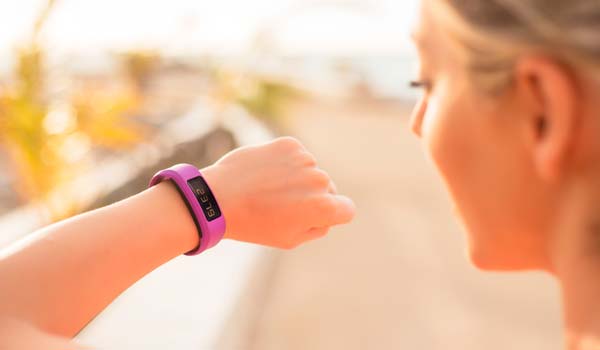Is fitness tech fit for purpose?
 Ethnographic research can accelerate innovation
Ethnographic research can accelerate innovation
System Concepts consultant Helen Cheetham asks whether fitness tech providers have left common sense in the locker room…
Activity trackers, smartwatches, beacons, self-driving cars, smart thermostats… the proliferation of innovative new products seems endless. But just because something is new and innovative doesn’t necessarily mean that people will find it useful or usable.
To create truly innovative products or services, you need to involve potential users in the development process. And as a UX and ergonomics professional, when I try out new technologies I can’t help but cast a critical eye over how well they meet my needs as a user. So after swapping my previous gym habit for regular fresh air and outdoor exercise earlier this year, I immersed myself in the world of fitness tech: here’s what I found…
Fitbit
When I started donning a Fitbit for my evening runs, I was delighted when it told me I should be eating 2,000 calories a day, as I’d always understood my target to be 1,500. Yet within a couple of weeks, the bathroom scales told me I’d gained weight. It took me a while to discover that this was the default setting, rather than my personal target – not a good start!
Returning indoors to the gym, I started an intensive weights programme. This brought new issues, as my Fitbit had no way of detecting that my arm movements were me flexing and extending heavy weights, rather than walking. This functionality seemed more attuned to what my friends were using their Fitbits for; tracking their step count over the day and motivating them to compete with their friends’ step counts and other challenges (for example a number of System Concepts’ employees have been doing the ‘Workweek Hustle’ challenge).
In addition, the more fiercely I exercised and perspired, the less effectively the Fitbit picked up my heart rate and recorded my exertions. Perhaps I should just walk up and down the living room, like some of my friends who were actually beating me at our challenges!
Strava
Disappointed with my Fitbit experience, but determined to continue my new regime of outdoor exercise, I bought a road bike and joined Strava.
The simple interface and intuitive design made it easy to set up and start tracking my rides. Aware of the potential personal safety issues, I deliberately started and finished tracking my rides a mile or so from my home, and posted my rides at different times throughout the day/week so that my full address and exact whereabouts could not be traced. I felt I’d conquered any possible pitfalls.
Fitness apps like Strava that allow you to compare your performance and compete with your friends aren’t to everyone’s taste, but I found the competitive element motivating. Nevertheless, I was caught off-guard when I went out to the country and swapped my road bike for a mountain bike to tackle a 90 minute off-road route.

UX and ergonomics perspective
Although I have enjoyed experimenting with fitness tech, my experiences have highlighted the fundamental importance of user research. This could have helped tech products like Fitbit and Strava to iron out issues earlier in their development.
For any product, it’s imperative to consider its context of use, and to conduct broad ethnographic research to determine how, where and why people use it. It’s also important to involve different user groups, including people with very different priorities and needs.
For Fitbit and Strava this would have ensured an even more intuitive, full-featured and engaging experience, and that the products met a more diverse range of user needs from the outset. It would also have given them even greater competitive edge.
I still use these two fitness tech products, but look forward to a time when they fluidly help me reach my specific goals, instead of surreptitiously encouraging me to adapt my lifestyle around them because they haven’t been designed with the user sufficiently in mind.
To create a great user experience, there’s no substitute for understanding your (potential) users’ daily lives, motives and aspirations. If you’re not sure where to start, we can help.
 Ethnographic research can accelerate innovation
Ethnographic research can accelerate innovation How we can help
How we can help